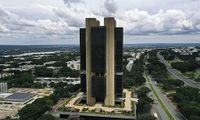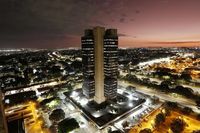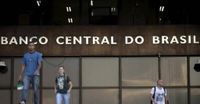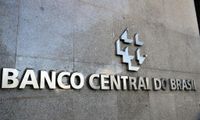The economy of Brazil is set for a significant shift as the Central Bank is poised to increase its basic interest rate, known as Selic, to 14.25% during the Monetary Policy Committee (Copom) meeting scheduled for March 19, 2025. This anticipated hike marks a continuation of aggressive monetary policy, with this being the fifth consecutive increase since the beginning of the current cycle. The last time Brazil's Selic reached this benchmark was in 2016, indicating a time of similar economic pressures.
This year has seen rising inflation rates, with the accumulated inflation reaching 5.06% in February, prompting fears that it may exceed the inflation target of 3% set by the Central Bank for 2025 and 2026. Market predictions indicate that inflation could increase further towards 5.68%, raising concerns about economic stability. The inflation spikes are essentially fueled by higher prices in food and industrial goods, which have been substantially impacted by currency depreciation and increased demand.
Previously, the Brazilian economy had started to show signs of positive recovery from the recession witnessed in 2015 and 2016, when the GDP fell by 3.5% and 3.3%, respectively. Now, reflecting on the last quarter of 2024, the GDP's growth was lesser than in previous quarters, sitting at merely 0.2%. The year ended with a strong GDP increase of 3.2% in 2023, followed by 3.4% growth in 2024, showing promise despite the impending rate hike.
Driving the Copom decision is the continued strain from international economic conditions. The Federal Reserve (Fed) in the United States maintained its interest rates in the range of 4.25% and 4.50%, responses critics suggest could add volatility to the inflation and growth expectations in Brazil. According to economist Cristiano Oliveira of Banco Pine, measures taken by the new Trump administration in the U.S. have inadvertently added to the uncertainty surrounding Brazil's monetary policy and global economic positioning.
Oliveira explained, "The impact of the new administration Trump on the global economy also adds volatility to inflation and growth expectations." Investors are observing closely as Copom members indicate that the economic path ahead will heavily rely on forthcoming data, expressing cautious optimism about the rate increases.
Reflecting on the possible outcomes of today's meeting, economists are divided on whether the Central Bank will maintain the aggressive interest rate strategy going forward. Some analysts speculate that the bank may signal a slowdown in future increases, while others foresee a continuous open stance without clear commitments to defer rate hikes in subsequent meetings.
In terms of economic implications, increased interest rates will elevate the cost of credit, making loans and financing more expensive for both consumers and companies. This move, although aimed at dampening inflation, could hinder consumption and curtail investments, which are crucial for sustainable growth. The elevated rates also signal higher government spending commitments towards servicing public debt, further stressing public finances amidst the inflationary environment.
Prominent Brazilian economists have raised alarms; Eric Gil Dantas from the Instituto Brasileiro de Estudos Políticos e Sociais criticized the Central Bank's actions, declaring, "You don’t need to increase Selic this much to contain inflation fueled by product prices, especially in a moment when the country might enter a recession." Meanwhile, other professionals, such as Weslley Cantelmo, emphasized signs of a cooling down in economic growth, inferring that the growth being recorded is occurring at a slowing pace.
Beneath these forecasts lies a resilient economy; despite expected challenges, sectors still showcase promising trends. This relative resilience could create opportunities, especially for fixed-income investments, with real gains nearing 10% on government bonds considering the Selic's levels. However, the overall economic climate remains precarious, marked by ongoing inflation and fluctuating growth indicators.
As Brazil braves through this economic storm, the world maintains a watchful eye. The Copom's decisions are central not only to domestic consumers and businesses but also to foreign investors looking for stability and predictability from Latin America's largest economy. With the global economy inching toward how monetary policies evolve, Brazil's path in 2025 is increasingly crucial.







